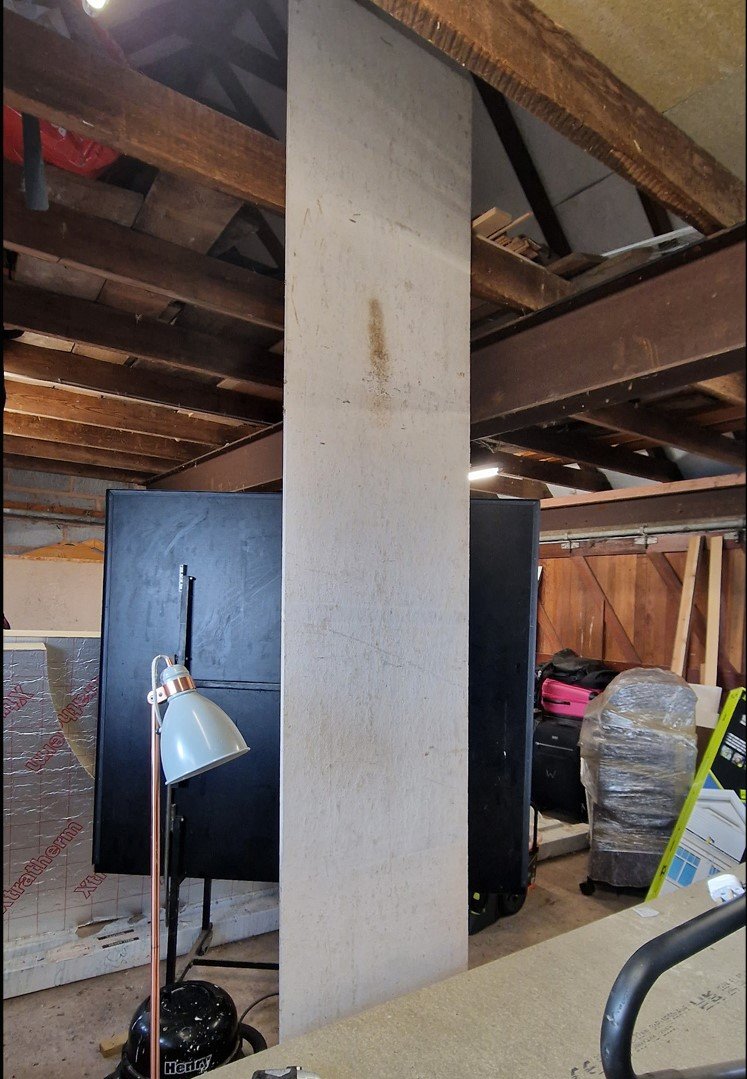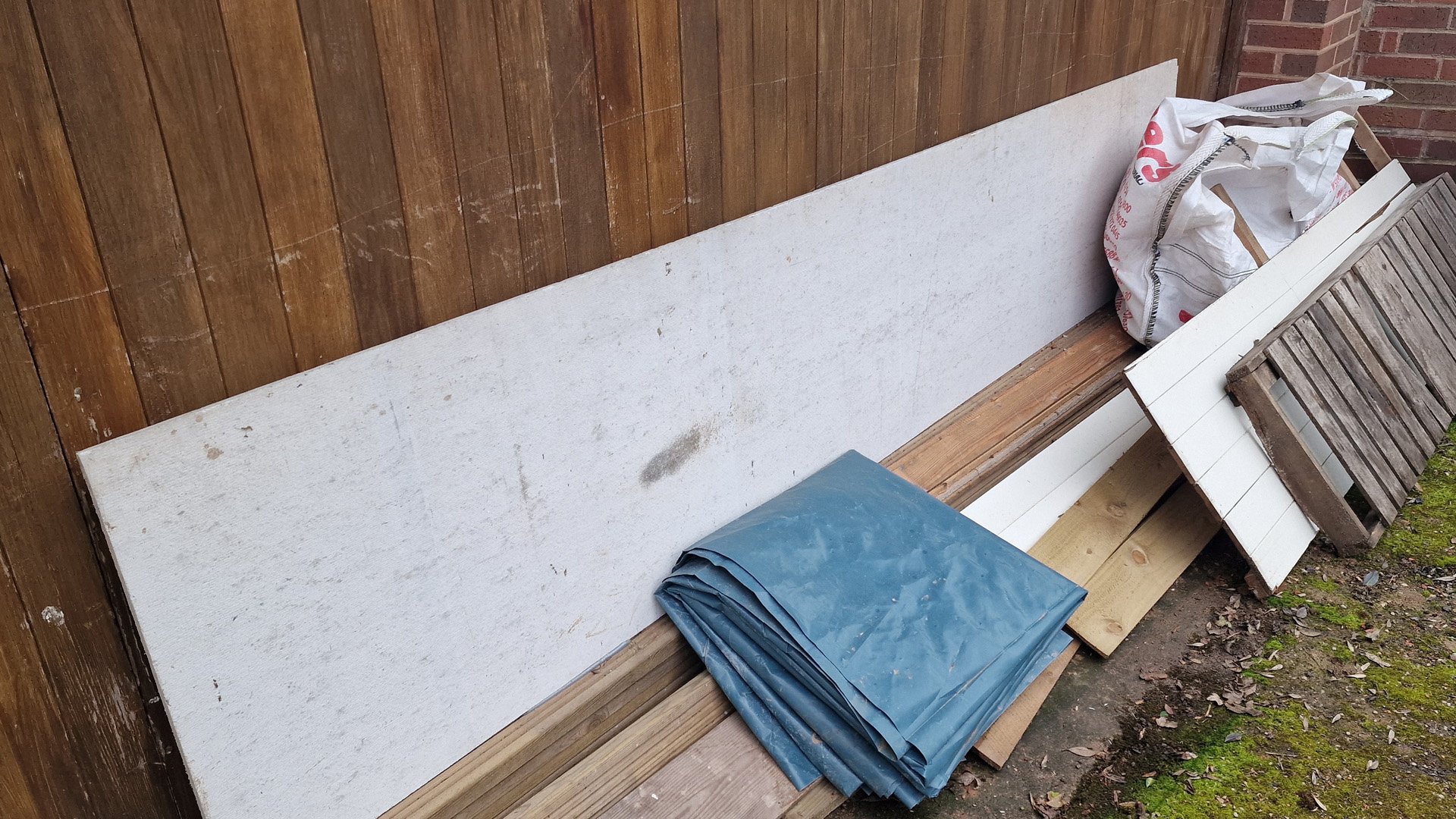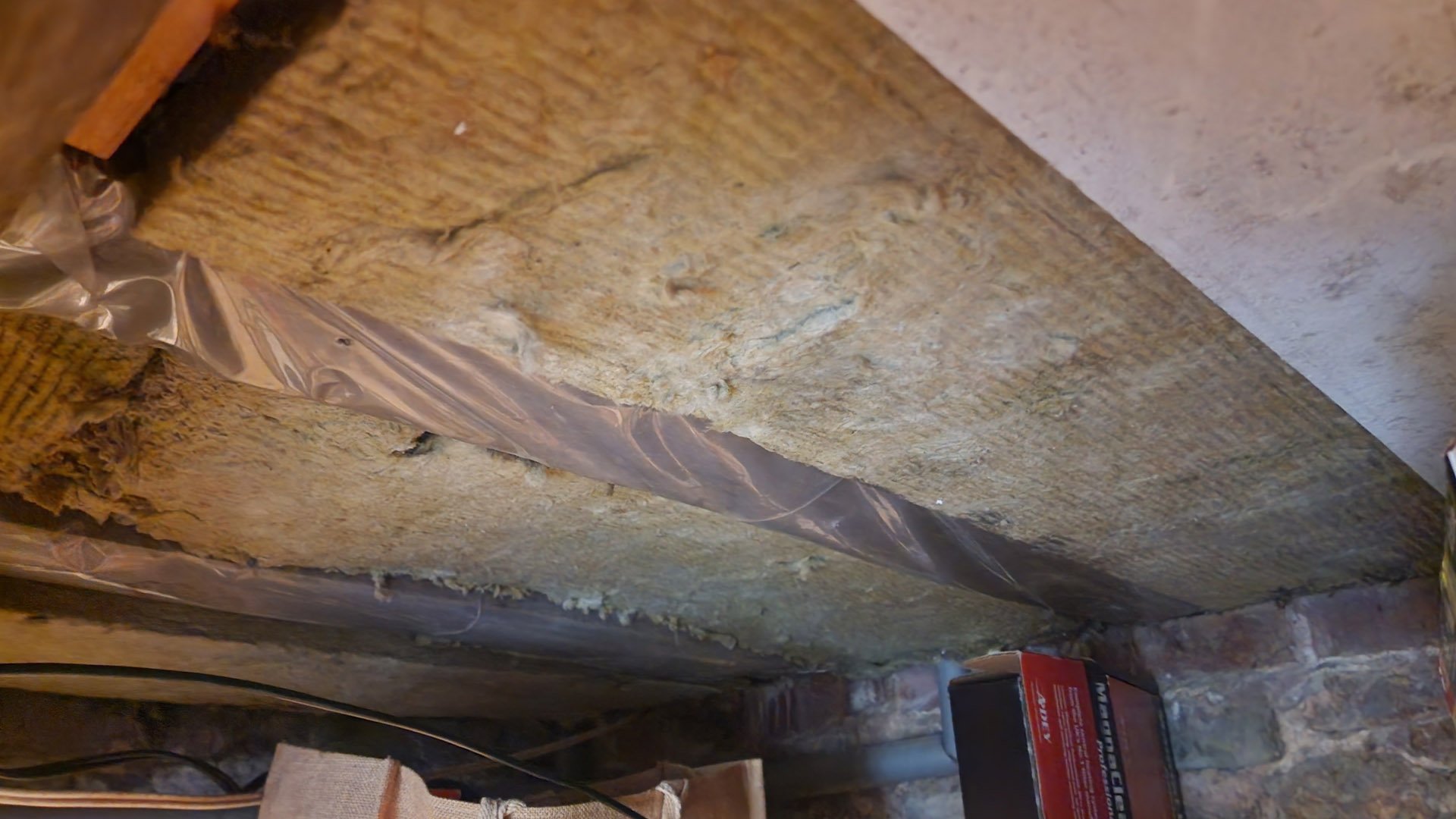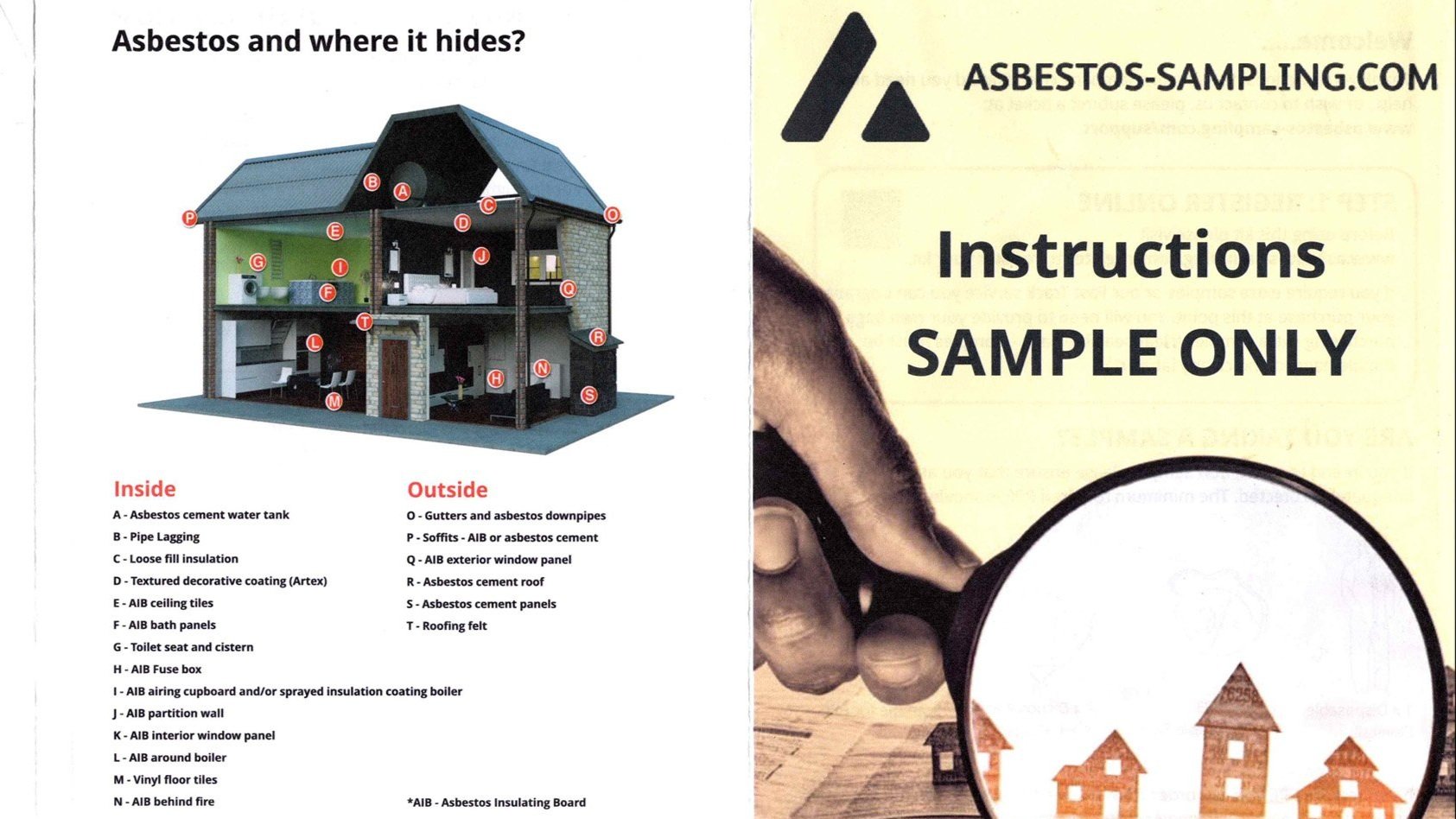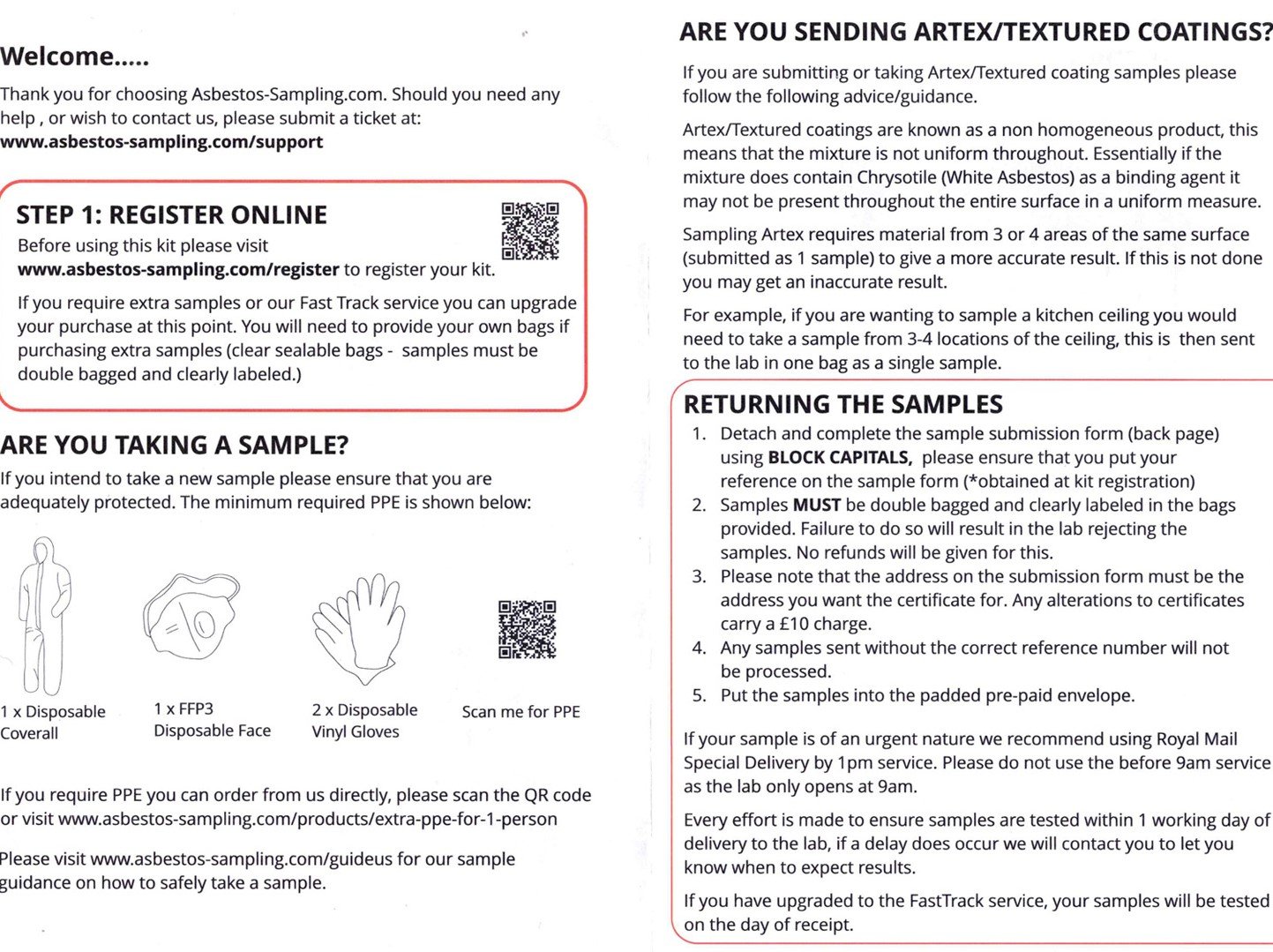I’ve got asbestos in my home!
There are lots of dangerous things you can do in your home, often without realising it and I’ve gone pretty close to the wire with this one. Now I am going to show you how to prevent making the same mistake I recently made and to tell you what steps to take if you think you might have asbestos. Click here or look below to watch the video.
For a long time I suspected I had asbestos in my Victorian cottage, in the ceiling of my cellar, below the eaves of my garage, and most recently I’ve begun to wonder if I’ve also got it here in the roof of the porch.
But it was clearing out the garage to board the loft a few months ago that I really started thinking about this as I had to lift down from the roof space a large, and rather mysterious roof board, which had obviously been used under the garage eaves back in the 1970s, and which is still in remarkably good condition as I found when I reroofed the garage last summer.
I wanted to find out if it was asbestos, because if it wasn’t I’d probably keep it to repair some missing panels in the cellar, and if it was, I’d have to work out a way of safely disposing of it.
I slightly put this to the back of my mind but was spurred into action when someone on my Discord forum pointed out you can buy testing kits online.
ASBESTOS TESTING KITS
I bought this sample only kit from Amazon - its not cheap admittedly at £40, but it’s actually not a lot when you consider the samples you send are being professionally tested. I went for the sample only kit as I already had the PPE, although the kit that contains the PPE is only another £10 so this is worth considering.
It arrived a few days later with instructions, a submission form, small bags for putting the samples into, and a returns envelope. The instructions leaflet also contains details on ordering PPE and sample guidance.
HOW TO USE IT
Whilst wearing the PPE, I carefully snapped off a corner of the panel, and also a corner of a similar panel that was leaning against the wall in the cellar. I think this was removed several years ago to enable some new central heating pipes to be installed.
I then double bagged each, labelled them up and put them in the post. I sent the samples off on 11th April and received the results by email on 17th. As suspected, the testing confirmed the materials are indeed Amosite, or brown asbestos, one of the most hazardous types of asbestos.
TYPES OF ASBESTOS
I’m not going to go into any great detail on the different types of asbestos as I’m not an expert on this and you can find everything you need to online, but Peter, a public health doctor on my Discord group summarised it perfectly as follows:
a type of fairly inert mineral fibre which can be used for structural purposes (eg mixed with concrete) or for insulation. It is harmless when locked away, embedded in concrete, for example. If released in dust, some of the fibres can be small enough to make their way deep into the tissues of the lungs. Although, in building terms, they are virtually inert, they are reactive to cause inflammation in the lung tissues which - after a long time (typically decades) can lead to cancer. The cancer most typically associated with asbestos exposure is called Mesothelioma. This affects the pleura - the membranes surrounding the lungs and lining the chest cavity. While there are no or hardly any pain sensors deep in the lungs, the pleura are sensitive, so mesothelioma can be very painful.
Asbestos, a naturally occurring mineral became incredibly popular from the 1930s to 1980s due to its insulating properties and the strength it added to building materials - leading to it being added to everything from thermal insulation, flooring, ceiling boards, artex and the list goes on.
The three types most commonly used in the UK were:
Crocidolite - or blue asbestos
Amosite - brown asbestos
Chrysotile - white asbestos
As a public health doctor neatly summarised recently on my forum, the microscopic fibres can hang in the air and if inhaled can react to cause inflammation in the lung tissues causing, often decades later, a form of cancer I mentioned earlier called Mesothelioma.
I believe crocidolite and then amosite are the most hazardous because of the way their spikes can get lodged in the lung tissues, and the chrysotile slightly less so because the fibres are curly and can therefore be breathed out more easily, although the relative risks of each can also depend on how much was actually installed. Again, I thank Cheesecake on my forum for this visual.
On one hand you’ve got friable asbestos - easily damaged/ able to crumbled by hand pressure and therefore dangerous to health, and non friable - solid, rigid that cannot be crumbled by hand pressure.
You’d have thought those roof boards would be classed as non friable but from what I’ve read they’re friable. If undisturbed they’re safe enough, but you could immediately see the fibres when I snapped off that sample for testing, and indeed the residue on the garage doors from just leaning the board against them. This is where I get to the worst part of the story - I drilled through the boards in the cellar when I was preparing all the cabling for the car charger back in march last year. I’m pretty sure I wore a mask at the time but I can’t guarantee I was wearing it for long enough - given the fibres are microscopic and can hang in the air for hours after they’re disturbed, and the residue on my holesaw kit which I haven’t used since, shows how I should have taken a lot more care during the clean up and my equipment will now have to be comprehensively cleaned.
DISPOSING OF ASBESTOS
My local tip does accept asbestos if it’s double (or possibly triple bagged) - I forget which. But this sheet is too large to transport without cutting so I’m assessing my options right now.
The drilled edges on the cellar boarding will need sealing, and may need removing entirely when I complete some scheduled meter tail upgrades.
I am yet to complete the upgrades to the electrics following installation of the charge point for our EV, which includes upgrading the tails from the meter box to the consumer unit - which will require removal of those ceiling boards in the cellar, so I’ll probably need to get a company in to properly remove and dispose of that boarding.
I return to the main point of today’s video which is to alert you to the dangers - as the problem at the time was that I wasn’t sure if the cellar boarding was asbestos or not so I was a lot more lax than I would have been if I had known for sure. The other point is to show you just how easy it is to get any materials you’re worried about tested, so I’ll leave you with that thought - if you’re unsure, get yours tested.
Thank you so much for reading! If you are new to my Youtube channel, don’t forget to subscribe here to stay tuned for more videos.
The Amazon links above are affiliate links. It doesn’t cost you anything to click on them but I do earn a small commission if you do.

